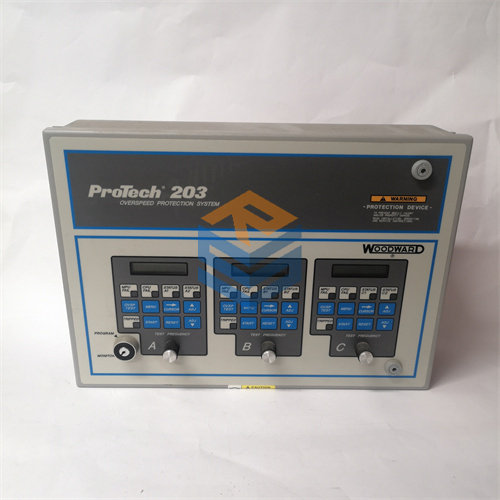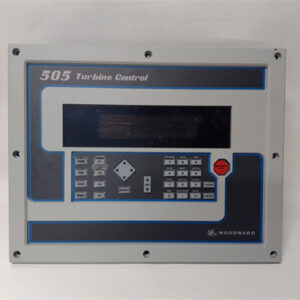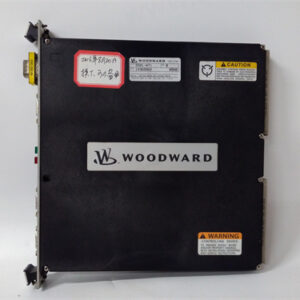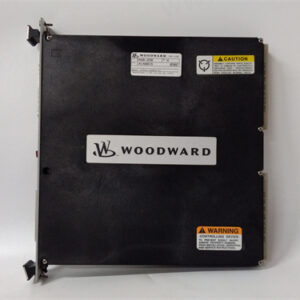الوصف
The WOODWARD 9907-1678 is an actuator.
Unlike some of the other 9907-series parts that fall under the V45TD/TS electro-hydraulic rotary actuators, the 9907-1678 appears to be associated with a different but equally critical type of Woodward actuator: the PG-EG Actuator.
The PG-EG Actuator is designed to replace older mechanical PG-type governors on diesel engines. It combines the advantages of modern electronic control with the convenience of fitting into existing PG-type drive and linkage systems.
Optimized SEO Titles
- WOODWARD 9907-1678: PG-EG Electro-Hydraulic Actuator for Diesel Engines
- Upgrade Engine Control: WOODWARD 9907-1678 PG-EG Actuator
- WOODWARD 9907-1678: Electronic Control with PG Governor Compatibility
- Optimize Diesel Performance with the WOODWARD 9907-1678 Actuator
Product Overview
The WOODWARD 9907-1678 is an electro-hydraulic actuator known as a PG-EG Actuator. Its primary function is to convert an electrical input signal into a proportional hydraulic output shaft position, which then controls the engine’s fuel flow. This actuator is typically used as the “muscle” for Woodward’s electronic control systems (both analog and digital) on diesel engines.
- Type: Electro-Hydraulic Actuator (PG-EG Series)
- Manufacturer: Woodward
- Model Number: 9907-1678 (often referred to as a PG-EG Actuator)
- Primary Function: Replaces mechanical PG governors on diesel engines to provide electronic control over fuel flow, utilizing existing PG-type drive and linkage.
Detailed Product Description
The WOODWARD 9907-1678 PG-EG Actuator represents a significant upgrade for diesel engine control systems. It allows for the precision and flexibility of electronic governance while maintaining compatibility with the mechanical interface of traditional PG-type governors. This makes it an ideal solution for retrofitting existing engines or for new installations that benefit from unattended starts and advanced control features.
Here’s a breakdown of its key characteristics and benefits:
- Electronic-to-Hydraulic Conversion: The actuator takes a low-power electrical command signal (typically 0–200 mA from a Woodward electronic control) and converts it into powerful hydraulic movement. This mechanical output precisely positions the engine’s fuel rack or other fuel control mechanisms.
- Compatibility with PG Bases: A major advantage of the PG-EG actuator is its design to fit exactly into any drive designed for PGE locomotive governors, PGA, or PGG governors. This simplifies retrofits significantly, often requiring no changes to the existing linkage drive or other engine configurations.
- Rotary Output: The actuator provides a rotary output shaft, making it suitable for direct connection to the rotational linkages found on many diesel engine fuel systems.
- Self-Contained Oil Supply: Many PG-EG actuators have their own self-contained oil supply, simplifying installation and reducing the need for external hydraulic plumbing from a separate HPU, although some configurations might utilize engine oil.
- Direct or Reverse Acting: The PG-EG actuator is available for use with either direct- or reverse-acting electronic controls. In a direct-acting system, a loss of electrical current typically causes a shutdown (moves to the minimum fuel position). In a reverse-acting system, a loss of signal often drives the actuator to full fuel, allowing a backup mechanical ballhead governor to take control, which is a common safety feature.
- Robust and Reliable: Built for the harsh environment of diesel engine operation, these actuators are designed for durability and minimal maintenance, with procedures similar to those of a mechanical PG governor. They are compliant with applicable CE Directives.
Key Features and Benefits
- Electronic Precision: Offers significantly improved accuracy and dynamic response compared to purely mechanical governors, allowing for tighter speed and load control.
- Ease of Retrofit: Designed to directly replace older PG-type governors, reducing installation complexity and cost.
- Enhanced Engine Performance: Enables finer tuning of fuel delivery for improved fuel efficiency, reduced emissions, and better transient response.
- Safety Features: Options for direct or reverse acting behavior provide flexibility in defining failure modes (e.g., shutdown or fail-to-full-fuel for mechanical governor takeover).
- Unattended Starts: Recommended for installations where automated or unattended engine starts are required, thanks to electronic control.
- Woodward System Integration: Works seamlessly with a wide range of Woodward’s electronic controls (like the 2301A/D/E series, 505, MicroNet, etc.) that provide a 0–200 mA command signal.
Technical Specifications (General to PG-EG Actuators like 9907-1678)
While precise, proprietary specifications for each sub-variant of the PG-EG actuator (e.g., specific work output ranges indicated by “servo options”) are found in Woodward’s detailed manuals, here are general inferred specifications:
Application Areas
The WOODWARD 9907-1678 PG-EG Actuator is specifically designed for applications where precise and reliable electronic control of diesel engines is required, particularly where replacing older mechanical governors is desired. Its primary applications include:
- Diesel Engine Generator Sets: For power generation applications requiring stable frequency and load control.
- Locomotive Engines: Often used in rail applications to upgrade and enhance control of diesel-electric locomotives.
- Marine Propulsion: For main or auxiliary diesel engines on vessels, providing improved maneuverability and fuel efficiency.
- Industrial Diesel Engines: Used in various industrial settings where large diesel engines drive pumps, compressors, or other machinery.
- Mining and Construction Equipment: Where heavy-duty diesel engines require robust and accurate speed and power control.
Related Products & Systems
The WOODWARD 9907-1678 PG-EG Actuator operates as part of a larger control ecosystem:
- Woodward Electronic Controls: These are the “brains” that send the 0–200 mA command signal to the PG-EG actuator. Examples include:
- 2301A/D/E Electronic Controls: Common speed and load sharing controls.
- 505 Digital Governors: Used for steam turbines, but the technology concept of sophisticated electronic control applies.
- MicroNet, Peak 150/300: More advanced turbine and engine control systems.
- Engine Fuel System Linkage: The mechanical connection between the actuator’s output shaft and the engine’s fuel rack or fuel control valve.
- Speed Sensors / Pickups: Provide engine speed feedback to the electronic control, enabling closed-loop speed regulation.
- Load Sharing Modules: If the engine is part of a paralleled generator set, load sharing modules (often integrated into the electronic control) ensure stable power distribution.



 +86 15340683922
+86 15340683922 +86 15340683922
+86 15340683922

